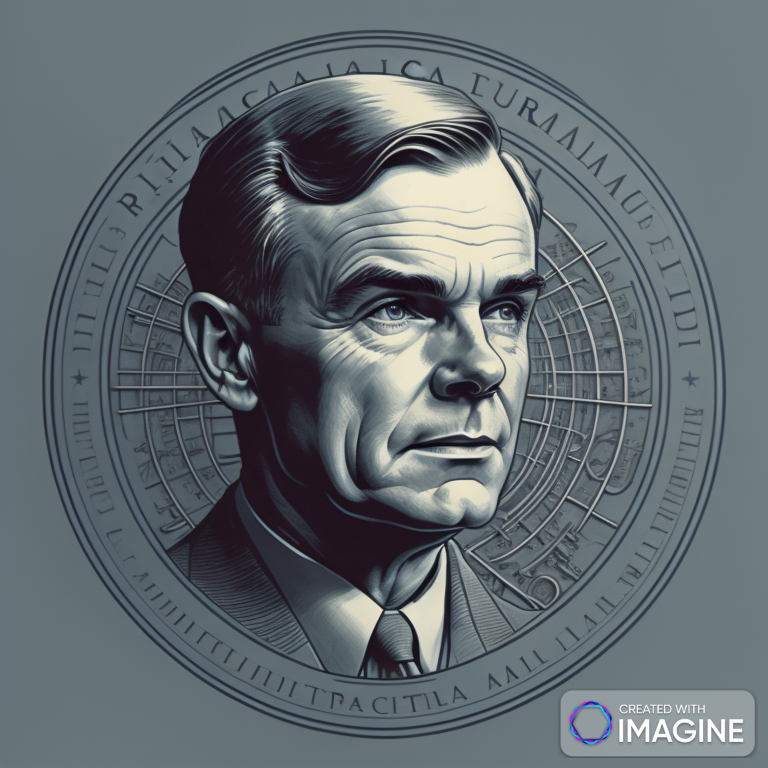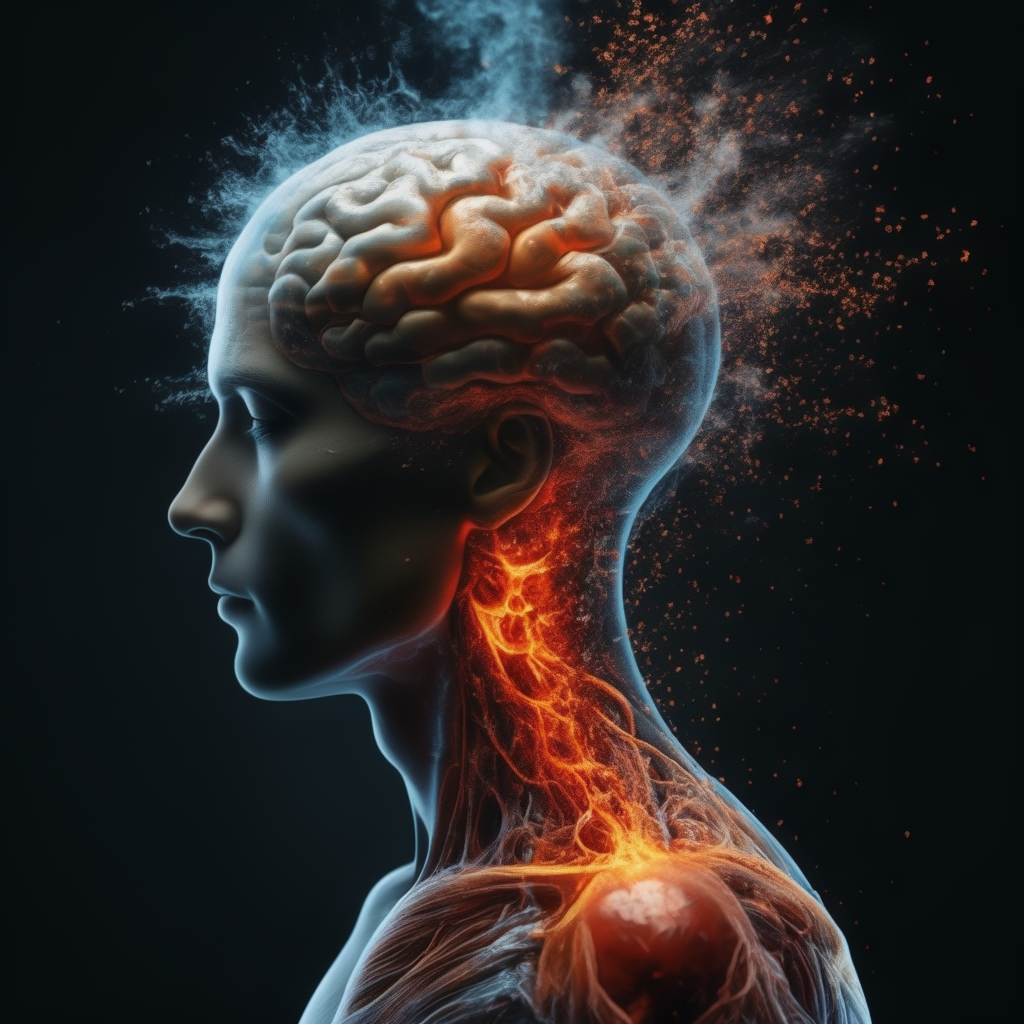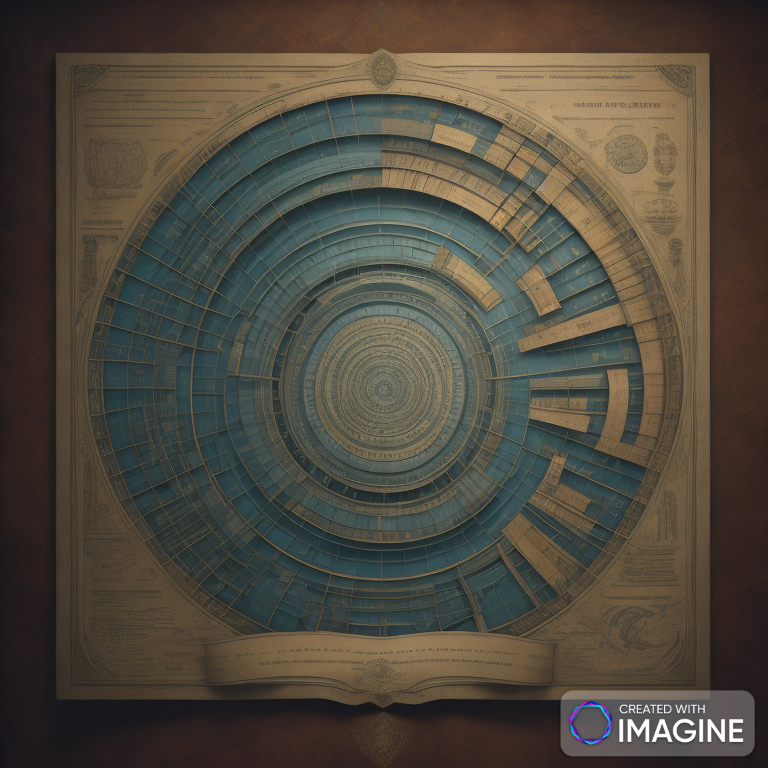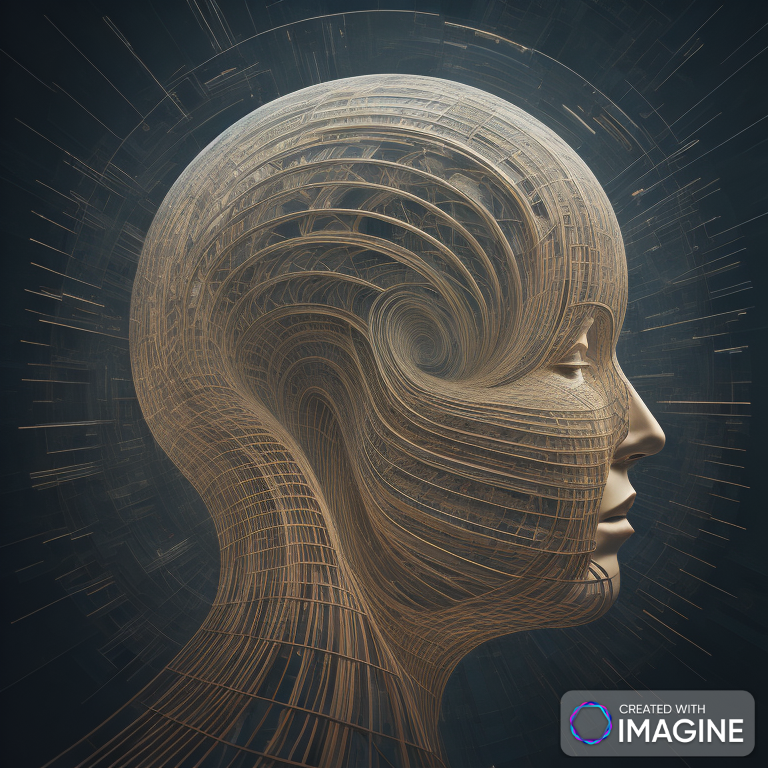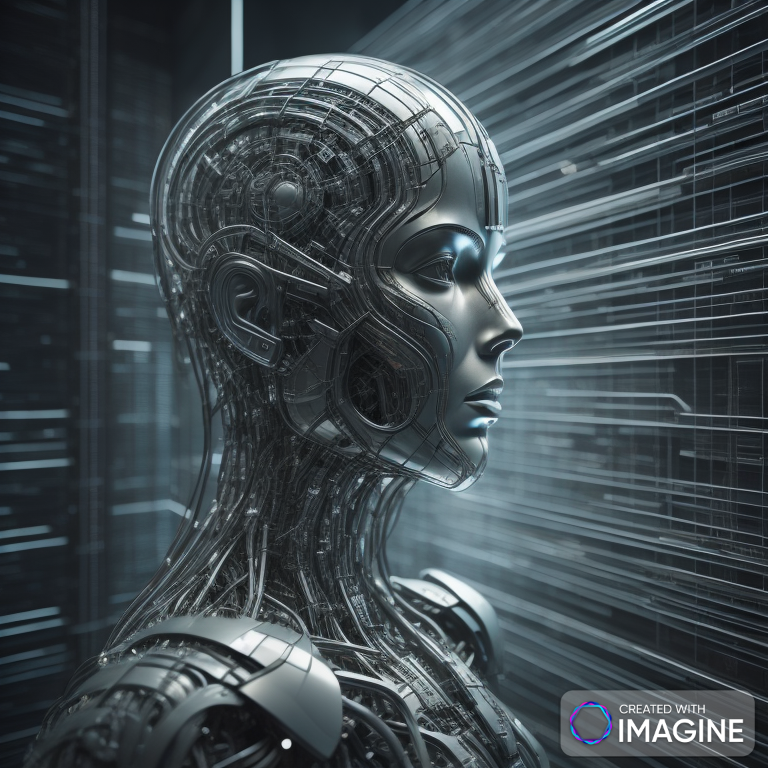Introduction:
Introduction to the Turing Test: Alan Turing’s proposed Turing Test stands as a landmark concept in AI. Introduced in his 1950 paper “Computing Machinery and Intelligence,” the Turing Test assesses a machine’s ability to exhibit intelligent behavior indistinguishable from that of a human.
In the realm of artificial intelligence, the foundations laid by early computer scientists continue to shape the landscape. One such groundbreaking concept is the Turing Machine, a theoretical construct introduced by Alan Turing in the 1930s. This blog post delves into the significance of the Turing Machine in the context of artificial intelligence, exploring its principles, functions, and enduring impact.
Turing’s Turing Machine: At the heart of Turing’s contributions is the conceptualization of the Turing machine. Introduced in 1936 in his seminal paper “On Computable Numbers,” the Turing machine is a theoretical construct that represents a simple yet powerful model of computation. It consists of an infinite tape, a read/write head, a set of states, and a transition function.
Artificial Intelligence (AI) and Its Foundations: Artificial Intelligence (AI) has become an integral part of our technological landscape, but its origins can be traced back to foundational concepts that laid the groundwork for this transformative field. One such cornerstone is the Turing machine, a theoretical construct introduced by Alan Turing, which not only revolutionized the understanding of computation but also shaped the trajectory of AI.
Alan Turing’s Contribution to AI: Biographical Context: To comprehend the significance of Turing machines in AI, it’s crucial to delve into the life and contributions of Alan Turing. Born in 1912, Turing was a mathematician, logician, and computer scientist whose insights continue to influence the realms of computer science and artificial intelligence.
Turing’s Turing Machine: The inception of Turing machines occurred in 1936 when Turing published his groundbreaking paper “On Computable Numbers.” In this work, Turing introduced the concept of a theoretical machine capable of solving any problem that could be mathematically calculated. This machine, now known as the Turing machine, became a pivotal element in the theoretical foundations of computation.
Theoretical Basis of Turing Machines:
Fundamental Components: Understanding the theoretical basis involves dissecting the fundamental components of a Turing machine. The machine comprises an infinite tape, a read/write head, a set of states, and a transition function. This conceptual simplicity belies its computational power.
Computational Power: Turing machines possess immense computational power. They serve as universal computational devices, capable of simulating any algorithmic process. This universality is a key aspect of their significance in theoretical computer science and, by extension, artificial intelligence.
Turing Machines and Problem Solving:
Solving Computable Functions: Turing machines operate as algorithmic decision-makers, capable of solving a wide array of computable functions. This fundamental aspect provides a foundational understanding of how computation can be applied to problem-solving, a principle deeply embedded in AI.
Universal Turing Machine: The Universal Turing Machine takes the concept further by demonstrating that a single Turing machine can simulate the operation of any other Turing machine. This universality is a testament to the versatility and efficiency of this theoretical model.
Turing Machines and AI Algorithms:
Relation to AI Algorithms: The relationship between Turing machines and algorithms used in AI is intrinsic. Turing machines provide a theoretical framework that underlies the fundamental principles of computation, which are mirrored in the algorithms employed by AI systems.
Simulating AI Processes: In the context of AI, Turing machines are not directly implemented but serve as a theoretical foundation. They allow researchers and practitioners to simulate and understand various AI processes and computations at a conceptual level.
Historical Context and Evolution:
Origins of the Concept: The concept of Turing machines emerged as part of Alan Turing’s efforts to formalize the notion of computation. Facing the limitations of previous mathematical models, Turing aimed to create a theoretical machine that could simulate any conceivable computation.
Evolution of Turing Machines: Since their inception, the concept of Turing machines has evolved. Researchers have explored variations and extensions, leading to the development of probabilistic and quantum Turing machines. These extensions play a role in shaping the theoretical landscape of modern AI research.
Applications and Case Studies:
Theoretical Foundations in Practical AI: While Turing machines are not directly applied in practical AI implementations, their theoretical foundations influence the design and understanding of AI algorithms. The principles of computation elucidated by Turing machines guide the development of AI models.
Case Studies in Algorithmic Decision-Making: Case studies in AI often involve algorithmic decision-making. The theoretical basis provided by Turing machines helps in analyzing and understanding the computational processes that underpin these decision-making algorithms.
Ethical Considerations:
AI and Consciousness: The ethical considerations surrounding AI and consciousness are complex. Turing’s ideas on machine intelligence contribute to the ongoing discussions about the ethical treatment and responsibility tied to AI entities, especially as AI systems become more sophisticated.
Societal Impact: Turing’s theoretical concepts have profound implications for the societal impact of AI. Issues such as bias, privacy concerns, and ethical responsibilities in AI systems are inherently tied to the foundational principles elucidated by Turing machines.
- Understanding the Turing Machine:
- Conceptual Framework: The Turing Machine serves as a conceptual framework for understanding the limits and capabilities of computation. It consists of an infinite tape, a read/write head, and a set of rules guiding the machine’s behavior.
- Universality and Computation: Turing Machines are renowned for their universal computation capabilities. They can simulate the logic of any algorithm, making them foundational to the theory of computation.
- Theoretical Foundations in AI:
- Algorithmic Complexity: Turing Machines are instrumental in discussions of algorithmic complexity. They help classify problems based on their computational difficulty, providing insights into the efficiency of algorithms and the limits of computation.
- Church-Turing Thesis: The Church-Turing Thesis asserts that any function computable by an algorithm can be computed by a Turing Machine. This thesis underpins the theoretical framework of artificial intelligence.
- Turing Machines and AI Algorithms:
- Algorithm Simulation: Turing Machines serve as a theoretical model for simulating algorithms. Understanding how a Turing Machine operates helps elucidate the step-by-step execution of algorithms employed in AI systems.
- Limits of Computation: Exploring the limits of what a Turing Machine can and cannot compute provides valuable insights into the inherent constraints of AI algorithms. This knowledge is crucial for developing efficient and effective AI solutions.
- Turing Machine in Machine Learning:
- Modeling Computations: Turing Machines offer a basis for modeling computations in machine learning. By understanding the fundamental principles of computation, researchers can refine and optimize machine learning models.
- Complexity Analysis: Analyzing the computational complexity of machine learning algorithms draws parallels to the theoretical discussions around Turing Machines. This analysis guides the selection and optimization of algorithms in AI applications.
- Challenges and Critiques:
- Halting Problem: The famous Halting Problem, formulated within the context of Turing Machines, highlights the inherent limitations in determining whether an arbitrary algorithm will halt or run indefinitely. This concept poses challenges in certain aspects of AI development.
- Beyond Turing Machines: While Turing Machines provide a robust theoretical foundation, there are computational phenomena, such as quantum computing, that extend beyond their scope. Acknowledging these extensions is crucial in shaping the future of AI.
- Practical Implementations:
- Inspiration for AI Design: Turing Machines inspire the design of practical AI systems. While real-world implementations may differ, the theoretical underpinnings derived from Turing Machines inform the architecture and functionalities of AI algorithms.
- AI and Cognitive Processes: Understanding the Turing Machine concept aids in modeling cognitive processes. By drawing parallels between algorithmic operations and human thought processes, AI researchers can refine models that emulate intelligent behavior.
- Ethical Considerations:
- AI Decision-Making: Delving into the theoretical foundations of computation helps shed light on the decision-making processes within AI systems. This exploration prompts ethical considerations surrounding transparency, accountability, and bias in AI algorithms.
- Human-AI Collaboration: Recognizing the theoretical foundations of AI encourages a collaborative approach between humans and machines. Understanding the limits and potentials of computation facilitates responsible AI development.
Conclusion:
The Turing Machine, though initially a theoretical construct, continues to exert a profound influence on the development and understanding of artificial intelligence. As AI systems advance, the principles set forth by Alan Turing provide a compass for navigating the complexities of computation and intelligent behavior. By exploring the intersection of Turing Machines and AI, we gain deeper insights into the theoretical underpinnings shaping the future of artificial intelligence.
Artificial Intelligence (AI) and Its Foundations: Artificial Intelligence (AI) stands as a transformative force in modern technology, with its roots deeply embedded in foundational concepts that have shaped its trajectory. Understanding the historical context and the core principles of AI requires delving into pivotal ideas, and one such cornerstone is the Turing machine.
Theoretical Basis of Turing Machines:
Fundamental Components: Breaking down the components, the tape serves as the memory, the head reads and writes symbols on the tape, states represent the current condition, and the transition function guides the machine’s actions based on the current state and tape symbol.
Computational Power: The computational power of Turing machines is profound. They can simulate the logic of any algorithmic process, making them universal computational devices. This universality underlines their significance in the theoretical underpinnings of computer science.
Turing Machines and Problem Solving:
Solving Computable Functions: Turing machines serve as algorithmic decision-makers, capable of solving a vast array of computable functions. Their ability to process information and execute algorithms provides a foundational understanding of problem-solving in the realm of computation.
Universal Turing Machine: The concept of a Universal Turing Machine takes this a step further. It can simulate the operation of any other Turing machine, showcasing the versatility and power of this theoretical model. The Universal Turing Machine is a key concept in theoretical computer science.
Turing Machines and AI Algorithms:
Relation to AI Algorithms: The relationship between Turing machines and algorithms used in AI is intrinsic. Turing machines provide a theoretical framework for understanding the fundamental principles of computation that underlie AI algorithms.
Simulating AI Processes: In the context of AI, Turing machines are employed to simulate various processes and computations. While practical AI implementations differ, the theoretical basis rooted in Turing machines allows for a conceptual understanding of the computational aspects of AI.
Limitations and Extensions:
Gödel’s Incompleteness Theorems: Delving into the limitations, Gödel’s incompleteness theorems, though not directly tied to Turing machines, contribute to the broader understanding of the constraints within formal mathematical systems. These theorems highlight the inherent limits of complete and consistent formal systems.
Extensions of Turing Machines: Extensions of Turing machines, including probabilistic and quantum Turing machines, push the boundaries of computation. These extensions explore computational models that go beyond the classical Turing machine, impacting modern AI research.
Turing Test and AI:
Contemporary Applications: In contemporary AI development, the Turing Test concept influences areas such as natural language processing and machine learning. Creating AI systems that can convincingly emulate human intelligence remains a benchmark in the field.
Conclusion:
Legacy of Turing Machines in AI: Summarizing the enduring legacy, Turing machines continue to be instrumental in shaping the theoretical foundations of artificial intelligence. Their conceptual simplicity and computational power provide a lens through which we understand the essence of computation in AI.
As AI progresses, the legacy of Turing machines endures. Ongoing developments, influenced by Turing’s groundbreaking ideas, continue to guide researchers and practitioners in advancing the frontiers of artificial intelligence. The interplay between theoretical foundations and practical applications ensures a dynamic landscape for the future of AI.
Legacy of Turing Machines in AI: Summarizing the enduring legacy, Turing machines continue to be instrumental in shaping the theoretical foundations of artificial intelligence. Their simplicity, universality, and conceptual power provide a lens through which we understand the computational essence of AI.
AI and Consciousness: The ethical considerations surrounding AI and consciousness are pertinent to Turing’s ideas about machine intelligence. Exploring questions of machine sentience and self-awareness raises ethical concerns about the treatment and responsibility tied to AI entities.
Looking Forward: As AI evolves, the legacy of Turing machines persists. Ongoing developments influenced by Turing’s groundbreaking ideas continue to guide researchers and practitioners in the quest for advancing the frontiers of artificial intelligence. The interplay between theoretical foundations and practical applications ensures a dynamic landscape for the future of AI.

